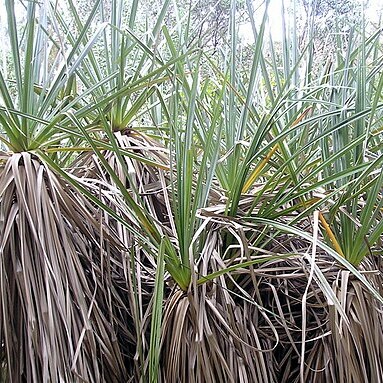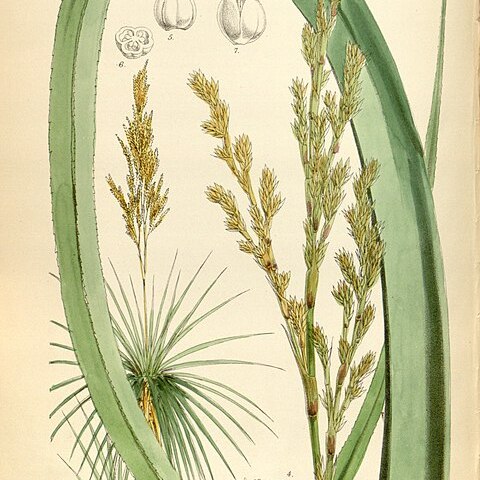Stems up to about 2 m high, 50-100 mm in diameter. Leaves linear-acuminate, up to 1 m long and up to 80 mm broad near the base, margins sharply serrulate. Inflorescence erect, up to 0.5 m high; branches ascending, c. 0.2 m long, bearing numerous flowering branchlets c. 40 mm long. Flowers in lateral fascicles surrounded below by funnelform, caudate bracts, diminishing in size towards the apex. Perianth segments acute, c. 3 mm long, bright brown. Stamens as long as perianth or slightly longer. Ovary ovoid, obtusely 3-angled.
A plant that grows in water. It forms dense stands 1.8 m tall. The leaves are narrow and taper to the tip. There are teeth along the edge. The flowers are in a branched group at the top of the plant. The flowers are 2 mm long. The fruit is a capsule. There are 1-2 seeds in each chamber.
Robust shrub to 2 m. Leaves lanceolate, glaucous, crowded, margins sharply serrate. Flowers in large panicles, minute, brown.



